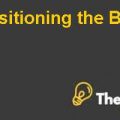Global Asset Allocation Case Study Solution
In the first situation, the expected return was estimated at 3.33%, assuming the probability of the achievement of the total portfolio return estimated under each scenario is 33%. The return calculated under the first scenario is significantly lower than the 7% current target return of each investor.
Second Situation:
In this situation, the inflation rates were changed, risk weights and returns for each portfolio investor was changed for three scenarios. For the optimistic scenario, the portfolio weights of the US, the other emerging market and developed market equities was increased while portfolio weights for treasury bonds and corporate bonds were reduced as the bonds offered low return compared to equities and in the optimistic scenario, the best options are selected. Low returns were estimated for corporate and treasury bonds as debt financing requires low cost and are less risky compared to equity due to being backed by securities. The total portfolio return of 9.41% was achieved due to increase in returns and portfolio weights, this return was greater as compared to the 8.86% return achieved in the first situation under the optimistic scenario.
In the middle scenario, portfolio weights and returns for equities and corporate bonds were reduced significantly whereas portfolio weights for treasury bonds were reduced moderately to balance the massive reduction in returns of equity holders as moderate total portfolio returns are expected in the middle scenario. As a result of the inflation increase, the total portfolio real return of 0.83% was achieved, which is much lower as compared to the 3.38% return expected in the same scenario under the first situation.
In the pessimistic situation, portfolio weights and returns for equities were significantly reduced whereas portfolio weights and returns for bonds were moderately reduced as during economic crisis, investments in bonds are preferred due to the low risk attached with bonds. As a result of the reduction in risk weight and returns and increase in inflation rates, the total portfolio real return of -0.90% was achieved,which is worse in comparison to the -0.15% return achieved in the same scenario in the first situation.
The movement in portfolio weights, returns and the inflation rates resulted in achievement of 2.42% total return, which is significantly lower as compared to the target return of 7%. The return was based on the assumption that each scenario has a probability of 33%.
Third Situation:
Under this situation, the current inflation rate of 2.8% was kept constant, whereas portfolio weights and return of each asset portfolio was changed to analyze the effect of inflation on the expected or target return of 7%. In the optimistic scenario, the total portfolio real return of 6.61% was achieved, which is lower as compared to 6.86% and 7.41% return achieved in the above situations for the same scenario.
In the middle level scenario, the total portfolio return of 0.28% was achieved, which is significantly lower than the 3.38% return achieved in the same scenario in the first situation and 0.83% achieved in the second situation. The analysis performed for the pessimistic scenario in the third situation resulted in achievement of -1.2% total portfolio real return, which is worse than the returns achieved in the both of the above scenarios.
When the returns were calculated by keeping the inflation rate constant, expected return of 1.88% was achieved, which is lower than the investor’s target return of 7%, and the expected return achieved under the above two performed analyses, the lower return was achieved as a result of using 2.8% inflation rate, which is too high as currently the US and other developed and emerging markets are facing the economic crisis. It is likely that the inflation rate will reduce soon as the economy will recover from the crisis and debt level will be reduced in the future.
Conclusion
Based on the results of the above analysis performed, find manager is recommended to reduce the expected return of 7%, as even in the optimistic scenarios where returns were great and inflation rates were low under all three situations; the total portfolio real return was lower than the target return. It is also advised to alter the portfolio weights, as in the second situation where the portfolio weights were altered, the total portfolio real return in the optimistic scenario was estimated at 7.41%, which is slightly higher as compared to the target return of 7%, indicating that altering portfolio weights might be beneficial for investors………….
This is just a sample partical work. Please place the order on the website to get your own originally done case solution.
How We Work?
Just email us your case materials and instructions to order@thecasesolutions.com and confirm your order by making the payment here











